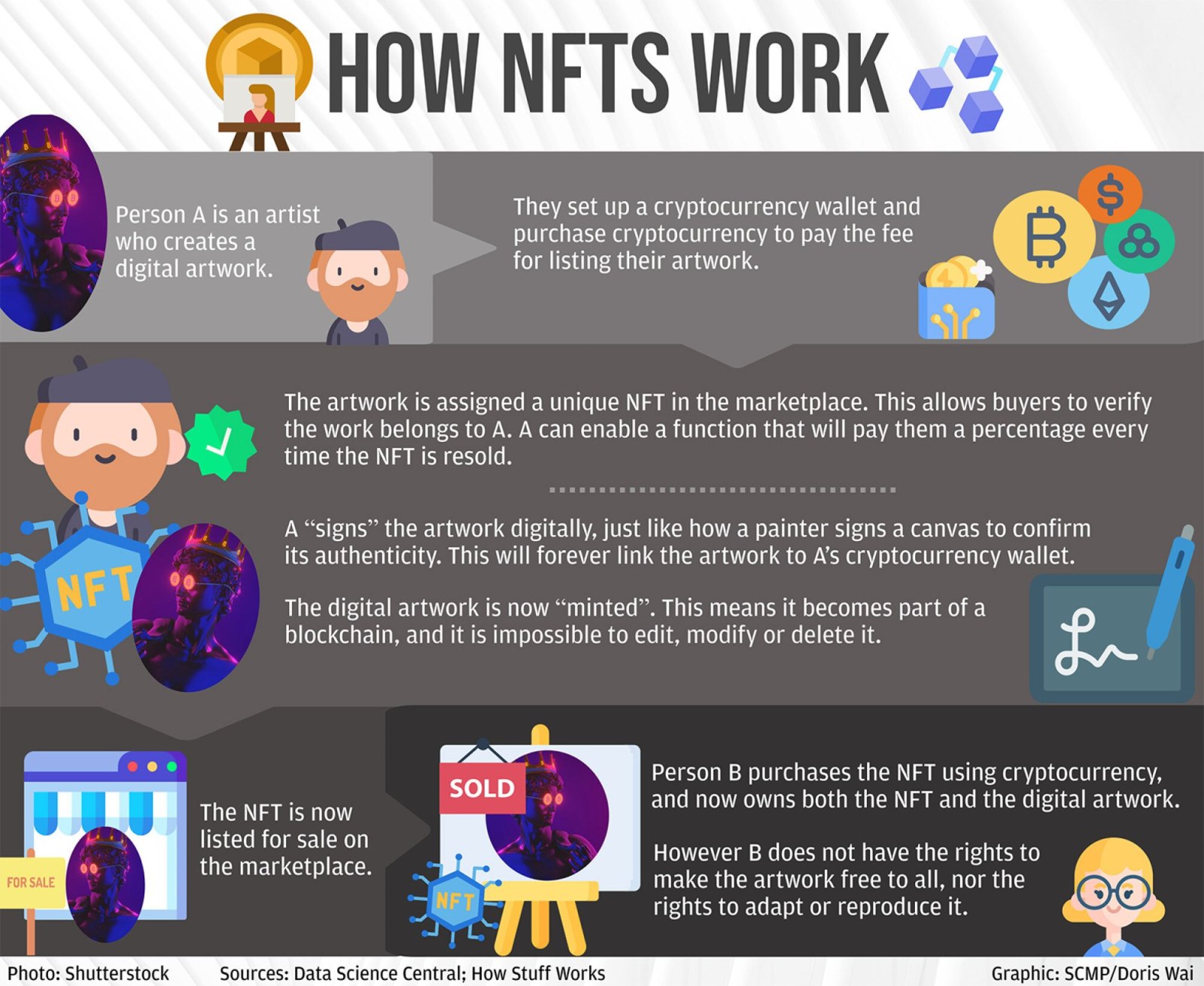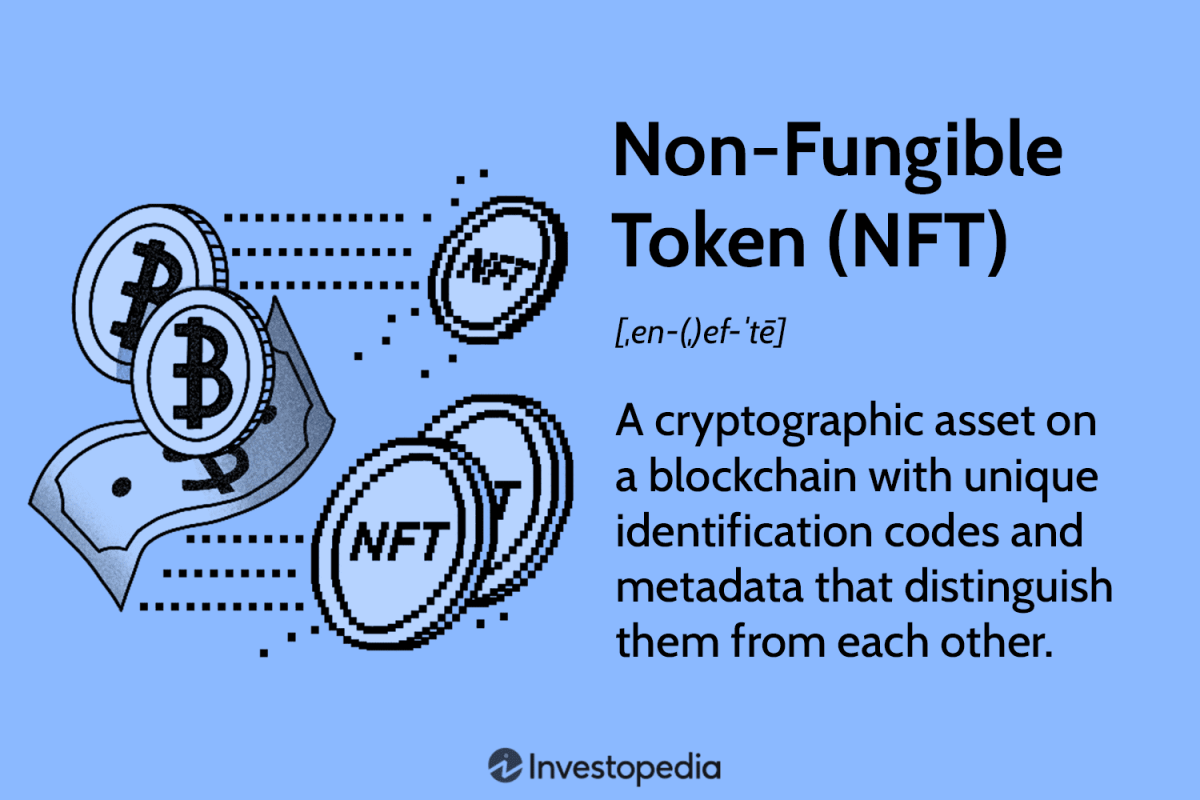How Does A NFT Work
NFT Enthusiast, have you ever wondered how a non-fungible token (NFT) works? In this article, we will dive into the fascinating world of NFTs and explore how they function. NFTs have been making headlines lately, with digital art pieces selling for millions of dollars. But what exactly are NFTs, and how do they work their magic? Let’s find out!
Introduction
NFTs, or non-fungible tokens, are unique digital assets that represent ownership or proof of authenticity for a specific item, whether it be artwork, music, videos, or even virtual real estate. Unlike cryptocurrencies such as Bitcoin or Ethereum, which are fungible and can be exchanged on a one-to-one basis, NFTs are one-of-a-kind and cannot be replicated or exchanged equally. They are built on blockchain technology, providing transparency, security, and scarcity to the digital collectibles market.
What Are NFTs?
NFTs are digital assets that utilize blockchain technology to verify and authenticate ownership. Each NFT contains a unique set of data that distinguishes it from any other token. This data can include information about the creator, the item being represented, and even details about previous owners and transactions. By encapsulating all this information within the token, NFTs ensure transparency and traceability in the digital realm.
Who Can Create NFTs?
Anyone with digital content and access to a blockchain platform can create and mint an NFT. Artists, musicians, content creators, and even brands have embraced NFTs as a way to monetize their digital creations. By tokenizing their work, they can establish provenance, sell their pieces directly to collectors, and even earn royalties each time their NFT is resold.
When Did NFTs Gain Popularity?
NFTs gained significant popularity in early 2021 when a digital artwork by artist Beeple sold for a staggering $69 million at a Christie’s auction. This groundbreaking sale brought NFTs into the mainstream spotlight, attracting attention from artists, investors, and collectors worldwide. Since then, NFTs have continued to make headlines with high-profile sales and collaborations, further cementing their position in the art and digital collectibles market.
Where Are NFTs Stored?

Image Source: i-scmp.com
NFTs are stored on blockchain networks, with Ethereum being the most popular platform for NFT creation and trading. The Ethereum blockchain utilizes smart contracts to facilitate the creation, ownership, and transfer of NFTs. These smart contracts act as self-executing agreements, eliminating the need for intermediaries and ensuring the secure and transparent transfer of digital assets.
Why Are NFTs Valuable?
The value of an NFT is based on its scarcity, demand, and perceived worth. As each NFT is unique, collectors are willing to pay a premium for digital assets that hold significant cultural, artistic, or historical value. Additionally, the ability to prove ownership and authenticity through blockchain technology adds value and trust to these digital assets, attracting buyers who want to participate in the growing digital collectibles market.
How Can You Buy or Sell NFTs?
To buy or sell NFTs, one must navigate online marketplaces specifically designed for NFT trading. These platforms provide a space for creators to showcase their work and for collectors to discover and purchase NFTs. Popular NFT marketplaces include OpenSea, Rarible, and NBA Top Shot. Transactions within these marketplaces are conducted using cryptocurrencies, primarily Ethereum, and can involve bidding, instant purchases, or even auctions.
Advantages and Disadvantages of NFTs
Advantages:
1️⃣ Increased Revenue Opportunities: NFTs allow creators to directly monetize their digital content, bypassing traditional intermediaries and earning royalties from future sales.
2️⃣ Provenance and Authenticity: NFTs provide a verifiable and immutable record of ownership, ensuring the authenticity and provenance of digital assets.

Image Source: investopedia.com
3️⃣ Accessibility and Ownership: NFTs enable fractional ownership, allowing multiple individuals to invest in high-value assets that were previously exclusive to a select few.
4️⃣ Creative Freedom: NFTs empower artists and creators to explore new and innovative ways of monetizing their work, pushing the boundaries of traditional art and digital media.
5️⃣ Global Marketplace: NFTs open up a global marketplace for artists and collectors, bridging geographical boundaries and connecting individuals from all over the world.
Disadvantages:
1️⃣ Environmental Impact: The creation and trading of NFTs on the Ethereum blockchain consume a significant amount of energy, contributing to carbon emissions.
2️⃣ Volatility and Speculation: The NFT market is highly volatile, with prices fluctuating dramatically. Speculative buying and selling can lead to inflated prices and potential financial risks.
3️⃣ Copyright Concerns: NFTs raise concerns about copyright infringement, as digital assets can be easily reproduced and shared without the creator’s consent.
4️⃣ Market Saturation: The increasing popularity of NFTs has led to a saturation of the market, making it challenging for emerging artists to stand out and find buyers.
5️⃣ Lack of Regulation: The NFT market is relatively new and lacks clear regulations, making it susceptible to scams, fraud, and copyright disputes.
FAQs (Frequently Asked Questions)
1. Are NFTs only used for artwork?
No, while NFTs gained popularity in the art world, they can represent various digital assets, including music, videos, virtual real estate, and even virtual goods in video games.
2. Can I buy an NFT with traditional currency?
Most NFT transactions are conducted using cryptocurrencies like Ethereum. However, some marketplaces are starting to accept traditional currencies or credit cards as well.
3. Can I sell my NFT after purchasing it?
Yes, NFTs can be resold on online marketplaces or through private transactions. When an NFT is resold, the original creator may be entitled to a percentage of the sale price.
4. Can I display my NFT in the physical world?
While NFTs are primarily digital assets, some platforms and devices allow you to display or showcase your NFTs in virtual galleries or through augmented reality experiences.
5. Can NFT ownership be transferred?
Yes, NFT ownership can be transferred from one wallet address to another using blockchain technology. The transaction is recorded on the blockchain, ensuring a transparent transfer of ownership.
Conclusion
In conclusion, NFTs have revolutionized the digital art and collectibles market by providing a secure and transparent platform for creators and collectors. These unique digital assets have opened up new avenues for monetization, provenance, and ownership in the digital realm. While NFTs offer exciting opportunities, it is essential to be aware of the potential risks and challenges associated with this emerging market. As the NFT space continues to evolve, it is crucial for artists, collectors, and enthusiasts to stay informed and navigate this new frontier with caution and curiosity.
Final Remarks
As with any investment or emerging technology, it is essential to conduct thorough research and exercise caution when participating in the NFT market. The value and future of NFTs are still evolving, and it’s important to make informed decisions based on your own financial situation and risk tolerance. Additionally, be mindful of the environmental impact of NFTs and consider supporting artists and creators directly through other means if you have concerns about energy consumption. Ultimately, the world of NFTs offers exciting possibilities, but it’s crucial to approach it with a balanced perspective and an understanding of the risks involved.